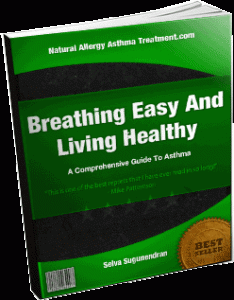Could An Asthma Attack Kill You?- A True Story By A Mother Of A Child With Asthma
Treatment for Asthma
 Are you the one who is looking for an option to get rid of Asthma? If yes, you are in the right place. This content will provide you some information on this health condition. Asthma is a very serious disease, which many people are suffering from today. If this health problem is not treated properly in the initial stages, it might become life threatening. Even though there are various types of treatment programs, they are not able to provide good results. Most of them also have different types of side effects and may not able suitable for certain people. Therefore, opting for a natural asthma treatment program can help you to get rid of this disease up to a great extent.
Are you the one who is looking for an option to get rid of Asthma? If yes, you are in the right place. This content will provide you some information on this health condition. Asthma is a very serious disease, which many people are suffering from today. If this health problem is not treated properly in the initial stages, it might become life threatening. Even though there are various types of treatment programs, they are not able to provide good results. Most of them also have different types of side effects and may not able suitable for certain people. Therefore, opting for a natural asthma treatment program can help you to get rid of this disease up to a great extent.
If you consult an expert or simple research on the web, you will be able to find different types of natural asthma treatment programs. These sites will not only give you information about the treatment programs, but also help you to find the nearest natural treatment center located in your area. They will also give you information on some of the simple treatments, which you will be able to practice from your home.
Yoga and meditation are also the best practices, which you can undergo to get rid of this disease. Regular Yoga and meditation will not only help you to get rid of Asthma, but also provide many other health benefits. Therefore, if you are interested to know more about these natural treatments, researching on the internet is the best option for you.
Click Now For More Information
Natural Asthma Treatment – Prevention and Self-Help For Asthmatics
[youtube]http://www.youtube.com/watch?v=EM29ioaAtDY[/youtube][youtube]http://www.youtube.com/watch?v=EM29ioaAtDY[/youtube]
Hello! I am here to tell you about Natural Asthma Treatment – Prevention and Self-Help For Asthmatics!
The best way to avoid the symptoms of asthma is to know the triggers and causes. You can then develop and devise ways on how you can prevent the problem completely. Patients should be vigilant and disciplined in their routines so they do not have to deal with the severe effects of the condition. You will find that you can get rid of the problem for several years or permanently by following a number of natural and healthy steps.
1. Preventing Asthma. You should talk to your doctor first to create a methodological plan on how to deal with the symptoms and effects of asthma. First of all, make a written asthma plan. Make a detailed plan on which maintenance medications to take and how to manage acute attacks. Make sure you follow the detailed plan properly. Until you are able to take control of your condition, do remember that Asthma is a condition that requires constant monitoring and control. Take control of the treatment and gain more control over your life.. Make sure you know the different triggers of asthma, particularly the one that you have. People can develop different symptoms and can present these in different ways too. Some of the most common irritants and allergens include pollen, pollution, mould and cold air. Determine what worsens or causes the asthma and take the necessary steps to avoid the triggers.
2. Some Things to Do. Watch your breathing carefully. You will learn to see and observe the impending attack by watching out for signs of wheezing, coughing and shortness of breath. Since your lung function can decrease before you see any further signs and symptoms, you can regularly measure the peak airflow using a home peak flow meter. If you act immediately, you will avoid having to suffer the very severe effects of asthma attacks.. You have to identify the early signs and take the necessary precautions to avoid complications. Once your peak flow measurements reduce and alert you of a coming attack, take the remedy as directed by your doctor and quickly cease any activity that may have caused the attack. If the symptoms do not get better, seek medical attention as planned.
3. Stick to the Plan. You have to stick to the treatment or prevention regime, even if your asthma seems to subside or you do not experience any ill effects for several days, weeks or months. You should not change anything until after you have talked to your doctor. Bring all your medications with you when visiting your doctor. The physician will need to double check everything to ensure that you are taking the right drugs and at the right dosages.
4. Lifestyle Changes. To prevent asthma for life, you have to stay away from people who smoke frequently. Second hand smoke can have various ill effects. You should also stop smoking and stay away from places that have hazardous materials and chemicals, like fertilizer plants, chemical plants, etc. Start exercising regularly by doing cardiovascular activity 2 to 4 times each week for 30 to 60 minutes per session. Reduce alcohol consumption and eat more of the healthy foods. You should also take a multivitamin each day to boost your immune system. There are natural ways to combat asthma with reduced medication but you need to follow a plan to achieve the full benefits.
http://www.NaturalAllergyAsthmaTreatment.com
Is Asthma Life Threatening?
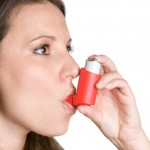 Is Asthma Life Threatening? A True Story As Told By A Mum
Is Asthma Life Threatening? A True Story As Told By A Mum
The following story is not only frightening, but also 100% true. This story will provide readers an insider’s view of what a typical Asthma attack is all about, as well as the many emotions it produces.
In 1984 at the age of two, Chad[1] had his first set of plugs inserted to treat chronic ear infections. Over the years, the infections lessened but never went away. At age five, his parents were again concerned with the increasing number and severity of infections, which prompted a trip to see an ear, nose, and throat specialist.
After a 10-minute examination, the specialist turned to the parents and said, “Did you know Chad has Asthma?” At that, a light went on. Both parents had recalled him coughing and wheezing but had not associated the two with Asthma. For the next two years, Chad had flare-ups but with a breathing machine and inhaler, he did relatively well…until…
Around Christmas in 1991, Chad and his mother attended a Boy Scout’s meeting at one of the other mother’s home. This was the first time visiting this particular home and the expectation was that the boys would play while the moms baked Christmas cookies for everyone to take home.
For about an hour, Chad and the other boys had been playing in the living room while the moms spent time in the kitchen when one of the little boys came up to Chad’s mom and asked, “Why won’t Chad play with me?” At first, Chad’s mom thought nothing of it but the boy continued, “He won’t wake up to play with me.”
Chad’s mom knew something was wrong. After all, Chad was an active little boy that did not simply fall asleep while visiting friends. She walked into the living room to find Chad lying on the couch, gasping for air, and his lips and fingers blue. Immediately, her heart sank – she knew he was having a serious Asthma attack.
With the hospital being less than a mile away, she grabbed Chad and raced out the door but with each passing second, she watched as his breathing became increasingly labored to the point she feared he would not make it to the hospital. Parking the car, she grabbed her son and ran toward the emergency room.
The panicked look on her face immediately got the attention of a nurse walking by who opened the doors, took Chad from her arms, and rushed off with him while yelling for doctors and barking out orders. All Chad’s mom could do was focus on the limp body of her precious little boy who was by now, barely breathing.
Four doctors and two nurses rushed over, started an IV, and began working on her son. For the next 45 minutes, all Chad’s mom could do was pray, not knowing if her son would live or die. After what seemed an eternity, Chad was finally stabilized and taken to ICU. For the next seven days, he was very sick. He lost 17 pounds during his hospital stay, had developed dark circles under his eyes, and he looked so helpless……….For Full Story, Click Here
Natural Asthma Treatment-Prevention and Self-Help for Asthmatics
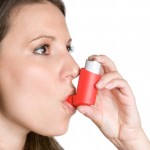 The best way to avoid the symptoms of asthma is to know the triggers and causes. You can then develop and devise ways on how you can prevent the problem completely. Patients should be vigilant and disciplined in their routines so they do not have to deal with the severe effects of the condition. You will find that you can get rid of the problem for several years or permanently by following a number of natural and healthy steps while taking your medications.
The best way to avoid the symptoms of asthma is to know the triggers and causes. You can then develop and devise ways on how you can prevent the problem completely. Patients should be vigilant and disciplined in their routines so they do not have to deal with the severe effects of the condition. You will find that you can get rid of the problem for several years or permanently by following a number of natural and healthy steps while taking your medications.
1. Preventing Asthma
You should talk to your doctor first to create a methodological plan on how to deal with the symptoms and effects of asthma. First of all, make a written asthma plan. Make a detailed plan on which maintenance medications to take and how to manage acute attacks. Make sure you follow the detailed plan properly. Until you are able to take control of your condition, do remember that Asthma is a condition that requires constant monitoring and control. Take control of the treatment and gain more control over your life.
Make sure you know the different triggers of asthma, particularly the one that you have. People can develop different symptoms and can present these in different ways too. Some of the most common irritants and allergens include pollen, pollution, mould and cold air. Determine what worsens or causes the asthma and take the necessary steps to avoid the triggers.
2. Some Things to Do
Watch your breathing carefully. You will learn to see and observe the impending attack by watching out for signs of wheezing, coughing and shortness of breath. Since your lung function can decrease before you see any further signs and symptoms, you can regularly measure the peak airflow using a home peak flow meter. If you act immediately, you will avoid having to suffer the very severe effects of asthma attacks.
You have to identify the early signs and take the necessary precautions to avoid complications. Once your peak flow measurements reduce and alert you of a coming attack, take the remedy as directed by your doctor and quickly cease any activity that may have caused the attack. If the symptoms do not get better, seek medical attention as planned.
3. Stick to the Plan
You have to stick to the treatment or prevention regime, even if your asthma seems to subside or you do not experience any ill effects for several days, weeks or months. You should not change anything until after you have talked to your doctor. Bring all your medications with you when visiting your doctor. The physician will need to double check everything to ensure that you are taking the right drugs and at the right dosages.
4. Lifestyle Changes
To prevent asthma for life, you have to stay away from people who smoke frequently. Second hand smoke can have various ill effects. You should also stop smoking and stay away from places that have hazardous materials and chemicals, like fertilizer plants, chemical plants, etc. Start exercising regularly by doing cardiovascular activity 2 to 4 times each week for 30 to 60 minutes per session. Reduce alcohol consumption and eat more of the healthy foods. You should also take a multivitamin each day to boost your immune system. There are natural ways to combat asthma with reduced medication but you need to follow a plan to achieve the full benefits.
Selva Sugunendran has published a number of Books on Health Matters including Asthma, Child Obesity, Diabetes and Cardiac diseases
If you found the above article useful, then visit the following website today to obtain a 100 page EBook that you could download immediately. This Ebook is a result of extensive research done by someone who himself suffered from this disease for 40 years. You will find everything you need to understand asthma and to take action to control the attacks using natural remedies:
Asthma – What is Allergy Asthma?
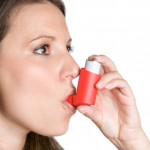 Asthma is a very common condition that millions of individuals have all over the world. You will find that the problem can also disappear for several years or permanently with the right measures and approaches. You should first understand what the problem is about and get to know the processes that trigger it. Here is some more information to help you.
Asthma is a very common condition that millions of individuals have all over the world. You will find that the problem can also disappear for several years or permanently with the right measures and approaches. You should first understand what the problem is about and get to know the processes that trigger it. Here is some more information to help you.
1. About Asthma
Asthma is a condition that precedes long term inflammation of the lungs. The inflammation is characterized by the bronchi or airways being narrowed reversibly. About 7% of all Americans have asthma, while about 6.5% of Britons have the condition. There are around 300 million all over the globe affected by the condition. During an attack, the smooth muscle cells located inside the bronchi will constrict, thereby causing the airways to swell and become inflamed. Breathing then becomes hard. The person usually has a tight feeling in his chest, and will need immediate medication or treatment.
2. More Info
About 4,000 Americans die of asthma each year. There are a number of immediate treatments to alleviate attacks, such as quick or short-acting beta-2 agonists that help acute episodes. The attacks can also be avoided by staying away from factors that trigger it like quick temperature changes and allergens. Drug treatment through long-acting beta-2 agonists or inhaled corticosteroids may also be used. If you wish to avoid side effects, you can try leukotriene antagonists. With treatment, patient prognosis is generally good.
3. The Symptoms
The signs and symptoms of asthma can range anywhere from minor and severe. These also change depending on the person. Some individuals experience mild symptoms like infrequent sneezing. Between each episode, the person may feel normal and have no trouble breathing, even while playing sports or doing other rigorous activities. Other signs and symptoms include cough and wheezing constantly or only during night time or exercise.
Other signs and symptoms include shortness of breath, chest pain or chest tightening, audible wheezing sound upon exhalation, wheezing sounds, trouble sleeping due to coughing, wheezing or shortness of breath, boost in frequency and severity of the signs and symptoms, coughing and wheezing enhanced by flu or colds, increase in need to use bronchodilators and a decrease in peak flow rates when measured using a peak flow meter.
4. What Causes It?
There is no real known cause for asthma. However, a combination of genetic traits and environmental factors are known to trigger the effects. Asthma triggers can vary between people. Exposure to different irritants and allergens can cause signs and symptoms, like respiratory infection, airborne allergens like pollen and dust mites, physical activity, cold air, some medications like aspirin and NSAIDs, air pollution, smoke, stress and strong emotions, GERD or gastroesophageal reflux disease, menstruation, allergy and preservatives.
5. Who’s at Risk?
Some people are especially at risk for developing asthma such as those with a family history of the condition, people born with low birth weight, overweight individuals, living in polluted areas, exposure to second hand smoke, smoking, exposure to chemicals and frequent respiratory infections during childhood.
Selva Sugunendran has published a number of Books on Health Matters.
Visit the following website today to obtain a 100 page EBook that you could download immediately. This Ebook is a result of extensive research done by someone who himself suffered from this disease for 40 years. You will find everything you need to understand asthma and to take action to control the attacks using natural remedies:
What Causes Asthma?
There is no known cause of asthma. Some people are simply born with the condition. You can get rid of the environmental factors, however, by knowing where these are and doing the necessary steps to avoid them completely. The triggers of asthma will differ among individuals, depending on their physical traits and other limiting factors.
1. Genetic or Environmental
Asthma can be triggered by either genetic or environmental factors. The condition can be influenced in terms of severity and the patient’s response to medication. A number of genetic and environmental factors have also been discovered through research. Others contributing factors are not yet fully understood. The upper airway is responsible for determining if the lungs can tolerate stress and other dangers. Otherwise, it will shut down the airway to prevent further damage and stress. Asthma is known to be an evolutionary defence. Taking out airborne pollutants can be highly successful in minimizing the condition.
2. Environmental Influence
Several environmental risk factors are linked with the development of asthma and the morbidity among kids. Some are discovered to be well-replicated or include a meta-analysis of many studies to support the direct link. Environmental tobacco smoke or maternal cigarette smoking is related to the high risk of asthma prevalence and morbidity, respiratory infections and wheezing. Low air quality, because of high ozone levels and traffic pollution are also highly associated with asthma. Some studies show that the disease and exacerbation of the condition can be caused by outdoor air pollutants.
3. More Causes
Caesarean sections have also been linked with asthma. There is actually a 20% increased risk among children delivery via C-section, compared to babies who were born vaginally. The modified bacterial exposure during C-section may have triggered the abnormality, since it also alters the immune system. Psychological stress has also been known to trigger asthma. Stress actually changes the immune system and causes it to boost the magnitude of the airway inflammation response to irritants and allergens.
Viral respiratory infections during childhood can actually help the individual develop a stronger immune system to stay protected against asthma. The protection also varies depending on the genetic traits of the person.
4. On Medications
The use of antibiotics during childhood has been connected to the development of asthma in different examples. It is believed that antibiotics can make a person highly vulnerable to asthma development as they change the gut flora, including the immune system. The hygiene hypothesis refers to the cause of asthma, plus other allergic illnesses. It is also backed by epidemiologic evidence for asthma. All items can negatively affect exposure to good bacteria, plus other immune system modulators that are essential during the development process. The risk for getting allergies and asthma then increases.
5. About Genes
There are more than 100 genes that are linked with asthma within a minimum of one genetic association study. The research should be repeated to make sure that the findings are not related to chance. 25 genes have recently been linked to asthma in 6 or more unique populations.
Selva Sugunendran has published a number of Books on Health Matters.
Visit the following website today to obtain a 100 page EBook that you could download immediately. This Ebook is a result of extensive research done by someone who himself suffered from this disease for 40 years. You will find everything you need to understand asthma and to take action to control the attacks using natural remedies:
http://www.NaturalAllergyAsthmaTreatment.com
Asthma Treatment-Drugs Used in Treatment of Asthma
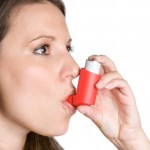 Asthma Treatment-Drugs Used in Treatment of Asthma
Asthma Treatment-Drugs Used in Treatment of Asthma
Some people can have asthma from the time they are born up to the rest of their lives. There are, however, several medications that can alleviate the symptoms or can completely lead to a relapse. Asthma can be treated or healed effectively using the right drugs and natural approaches. You have to know the nature and side effects of each to stay safe and avoid very untoward results. Here is some more information about treatment.
1. Some Drugs to Know About
Fluticasone is known as a corticosteroid that is taken to minimize inflammation in the nasal passageway to treat rhinitis, hay fever and seasonal allergies, together with other existing drugs. Advair is a mixture of asthma inhaler that has salmeterol, a bronchodilator and fluticasone to control asthma for several years. You can take zafirlukast to control the symptoms of asthma and minimize the number of asthma attacks in children 5 years old or older. The medicine also helps breathing by minimizing the inflammation in the airways. The regular use of the drug can manage asthma, and boost the person’s ability to do physical activity. You might also notice that you need your rescue inhaler less frequently. However,unlike natural remedies,these medications could cause serious side effects in some individuals. It is important to read carefully the leaflet that comes with the medication.
2. More Drugs
Flunisole is taken to prevent the symptoms of asthma like shortness of breath and wheezing. For people who need to take corticosteroids orally to manage the symptoms of asthma, they can take flunisolide to reduce the dose of the drug that can be taken by mouth. The medication is included to a class of drugs called corticosteroids. Its function is to make breathing more relaxed by minimizing the airway inflammation in the lungs. The drug also minimizes phlegm and other symptoms of asthma.
3. Other Useful Inhalers
Alupent inhalers can help open the airway passage to make breathing much easier. Metaproterenol is taken to prevent and treat breathing problems. Mometasone can help you manage shortness of breath and wheezing that is usually present during asthma attacks. The drug is also a corticosteroid and functions straight in the lungs to reduce the swelling in the airways. Triamcinolone can manage asthmatic symptoms like shortness of breath or wheezing. For individuals who need to take corticosteroids orally, the drug can decrease the dose too. This is a corticosteroid that will reduce the swelling in the lungs, as well as phlegm. Again, unlike natural remedies, the serious side effects in certain individuals should be taken into consideration when using these medications.
4. Beneficial Medications
Beclomethasone can relieve allergic and non-allergic nasal symptoms like runny nose, sneezing and itching. It can also be used to keep growths in the nose or nasal polyps from developing after removal via surgery. Terbutaline can treat shortness of breath and wheezing due to asthma. You can work and sleep better because breathing passages are cleared and opened.
5. On Inhalers
You can choose to take inhalers to prevent shortness of breath and wheezing from asthma. Other medications can also be taken together with this, if you are experiencing symptoms two times a week at least. Maxair inhalers can relax the lung smooth muscles and dilate airways to boost breathing. The inhaler allows the drug to reach the deep portions of the lung for optimal results.
6. Natural Remedies
There are a number of natural remedies and treatment that can help asthmatics to get significant relief, without the attendant serious side effects. These include breathing exercises, herbal remedies and avoidance of triggers etc.
Selva Sugunendran has published a number of Books on Health Matters.
Visit the following website today to obtain a 100 page EBook that you could download immediately. This eBook is a result of extensive research done by someone who himself suffered from this disease for 40 years. You will find everything you need to understand asthma and to take action to control the attacks using natural remedies:
